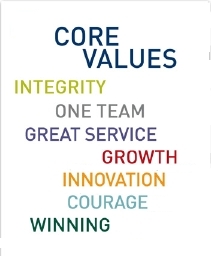Recent discussion on the Working Stories discussion group (Stephanie West Allen points out in her comment that all Working Stories postings can be read in its archives) has focused on how to elicit stories from people who are not accustomed to telling their stories.
Group members have made these suggestions:
Seth Kahan suggests the JumpStart storytelling process he developed.
Alex Linkser of Organizational Democracy says: “My favorite way to get people to express themselves in an interesting way is to ask them, ‘What actions are you great at, and also excite you?'”

Victoria Ward suggests asking people to “imagine a photograph of a moment when and describe the photograph.” She added: “I’ve always liked objects, too. People can tell a story through an object (prop, image, symbol, piece of autobiography, Linus blanket) with more ease and confidence often.”
Carol Mon notes that it’s helpful to give people “a very definite time frame in which to answer … “You must show them that you are timing them. If they respond in 2 minutes or under it gives you as the listener and opportunity to follow up with questions to extract more information and the feelings. This puts people a bit more at ease because it then becomes a conversation not a monologue.”

From Svend-Erik Engh:
I ask people to tell about something that is absolutely comfortable. One subject could be “This morning.” I let people stand in a big circle and they tell two by two – I have tried this with 180 people – and they just tell about this morning. Storyteller tells this story for one minute. The listeners have to be interested in the story, no matter what the storytellers say. Then response from partner – what was the clearest picture in the story? This is important, because that way you give response that shows a left side of the brain – activity. Then listeners shall give positive response to the storyteller – concrete: Did you like the voice, hands, eyes etc. I then ask every one to turn around to the partner behind – then they tell the story they heard from first partner. You are as a storyteller free to improve the story.
(Svend-Erik offers a handout on how to become a better storyteller)
Chandni Kapur of Anecdote in Australia recommends “the story spine,” which looks like this, according to Chandni:
Way back when..
Everyday…
But one day…
Because of that… (repeat three times or as often as necessary) Until
finally…
Ever since then…
And the moral of the story is…(optional)
More about this technique here. Note “Tim E’s” comment to this entry that credits the Story Spine Comment to Kenn Adams while at Freestyle Repertory in New York in the 1990s. (You can learn more in his book.
M.K. Clark observes that “people tend to express themselves more when telling stories they are passionate about and desire to share. They also tend to share more when the listener(s) are interested. The stronger the relationship, the more people can share with each other about the process.”
Noa Baum offers these guidelines:
- Put a lot of thought into the initial prompts. I find that the right prompt for the teller/group, that is specific enough and flexible enough can do wonders in helping people focus and discover that they actually know how to tell a story. i.e., tell a story about a time you lost something of value; a time you received a special gift, etc.
- Focus on the imagination – guided imagery into the place, “seeing” what it looks like in the movie of your mind; “seeing” what/who is there. starting by describing a place to a partner usually leads to stories – we always start telling of something that happened there.
She also offer ideas she’s used to guide people fairly quick into a richer, better shaped story:
-
- Have partner interview you for details: asking curious questions about your story. This helps remember more and realize details that need to be told.
- Put expression in your voice: Participants get a list of words and sentences and another list of ways to say them. for example say “no, I won’t do it” with joy; suspicion; love; as if you’re embarrassed, etc.
- Tell your story as a “once upon a time” fairytale in third person. Allow yourself to exaggerate and embellish. Make it suspenseful as if you’re telling it to a child. Then tell the story again as “you” in first person and notice how it changed.
![]() The banner of the blog Shortfolio describes its purpose as “very short stories,” but compared to the 3-word and 6-word takes covered in my last entry, these “very short stories” of 500 words seem like War and Peace.
The banner of the blog Shortfolio describes its purpose as “very short stories,” but compared to the 3-word and 6-word takes covered in my last entry, these “very short stories” of 500 words seem like War and Peace.







